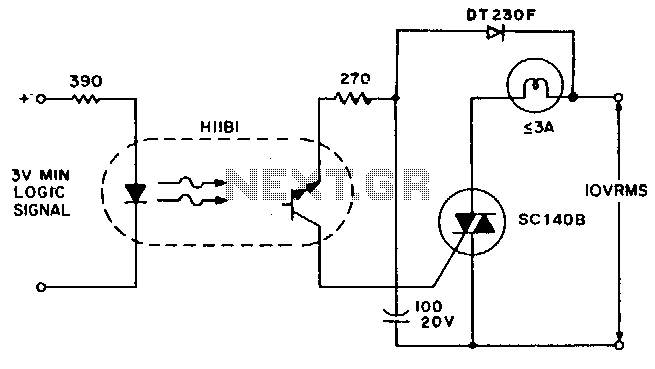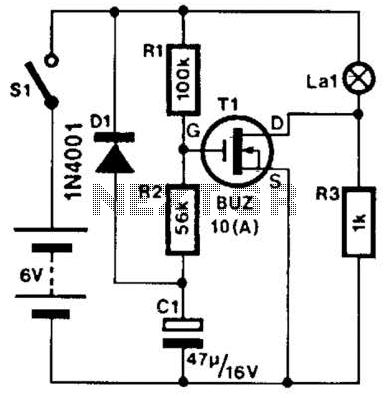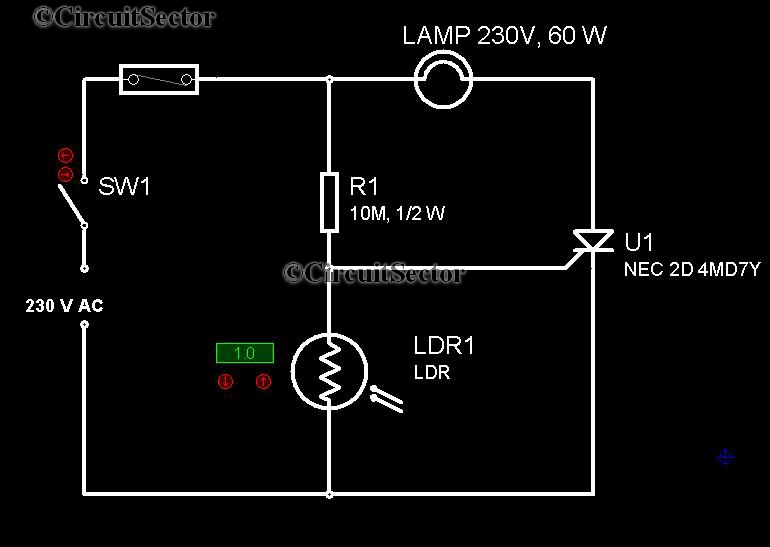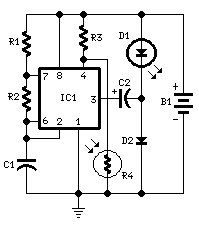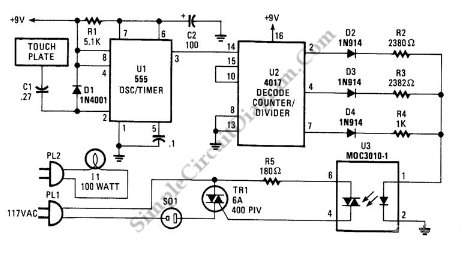
Audio-controlled lamp
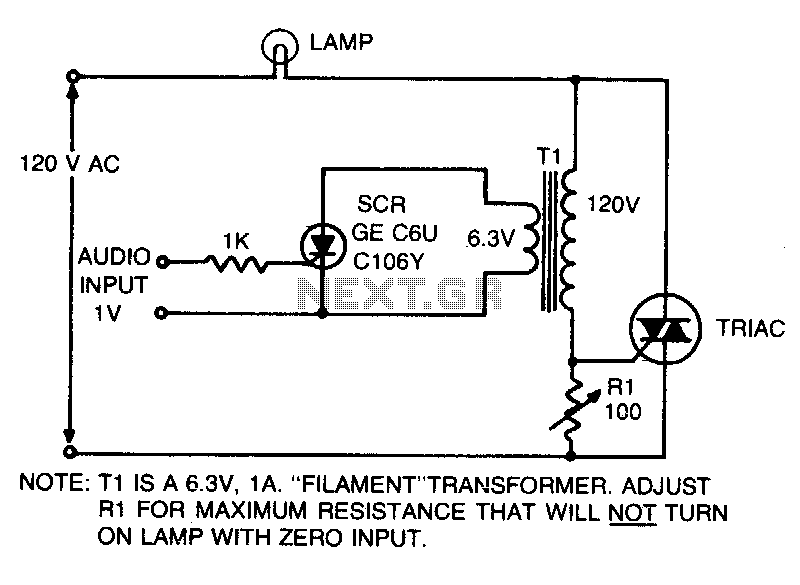
This is an on-off control with an isolated, low voltage input. The switching action occurs rapidly compared to the response time of the lamp and the human eye, resulting in an effect with audio input that resembles a proportional control circuit. If the input signal to the SCR includes phase-controlled pulses, full wave control of the lamp load is achieved.
The described circuit operates as an on-off control mechanism, utilizing a Silicon Controlled Rectifier (SCR) for switching. The isolation of the low voltage input ensures safety and prevents interference from high voltage components. The rapid switching capability of the SCR allows for effective modulation of the lamp's brightness, despite the inherent response delays of both the lamp and human perception.
In practical applications, the use of phase-controlled pulses as the input signal to the SCR facilitates precise control over the power delivered to the lamp load. This method allows for full wave control, which is advantageous in scenarios requiring varied light intensity. By adjusting the phase angle of the input signal, the effective voltage and current flowing to the lamp can be finely tuned, enhancing the overall performance of the lighting system.
The circuit may include components such as a microcontroller or a dedicated phase control circuit to generate the appropriate input signals for the SCR. Additional elements like snubber circuits might be employed to protect the SCR from voltage spikes, ensuring reliable operation over time. Furthermore, feedback mechanisms can be integrated to allow for real-time adjustments based on the lamp's performance, ensuring optimal functionality in varying conditions.
Overall, this on-off control circuit exemplifies a sophisticated approach to managing lamp loads, combining rapid switching with phase control to achieve desired lighting effects efficiently.This is an on-off control with isolated, low voltage input. Since the switching action is very rapid, compared with the response time of the lamp and the response of the eye, the effect produced with audio input is similar to a proportional control circuit If the input signal to the SCR consists of phase-controlled pulses, full wave control of the lamp load is obtained. 🔗 External reference
The described circuit operates as an on-off control mechanism, utilizing a Silicon Controlled Rectifier (SCR) for switching. The isolation of the low voltage input ensures safety and prevents interference from high voltage components. The rapid switching capability of the SCR allows for effective modulation of the lamp's brightness, despite the inherent response delays of both the lamp and human perception.
In practical applications, the use of phase-controlled pulses as the input signal to the SCR facilitates precise control over the power delivered to the lamp load. This method allows for full wave control, which is advantageous in scenarios requiring varied light intensity. By adjusting the phase angle of the input signal, the effective voltage and current flowing to the lamp can be finely tuned, enhancing the overall performance of the lighting system.
The circuit may include components such as a microcontroller or a dedicated phase control circuit to generate the appropriate input signals for the SCR. Additional elements like snubber circuits might be employed to protect the SCR from voltage spikes, ensuring reliable operation over time. Furthermore, feedback mechanisms can be integrated to allow for real-time adjustments based on the lamp's performance, ensuring optimal functionality in varying conditions.
Overall, this on-off control circuit exemplifies a sophisticated approach to managing lamp loads, combining rapid switching with phase control to achieve desired lighting effects efficiently.This is an on-off control with isolated, low voltage input. Since the switching action is very rapid, compared with the response time of the lamp and the response of the eye, the effect produced with audio input is similar to a proportional control circuit If the input signal to the SCR consists of phase-controlled pulses, full wave control of the lamp load is obtained. 🔗 External reference
